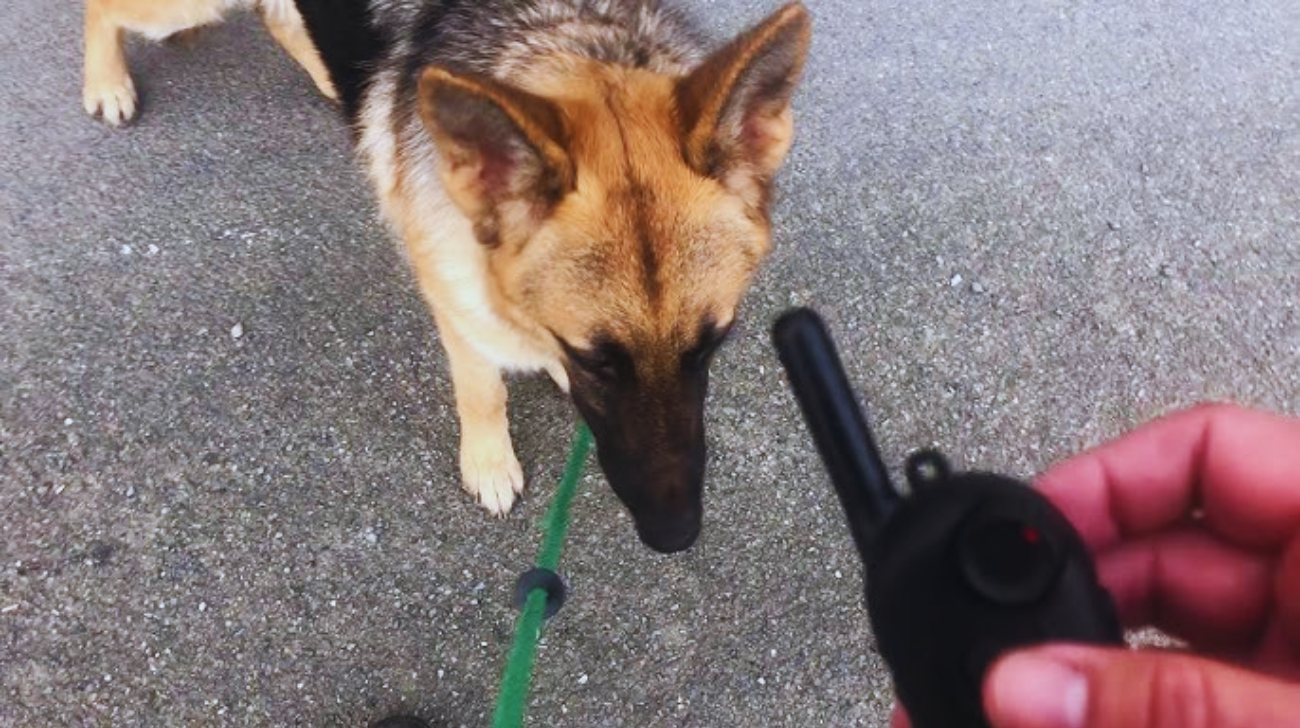When it comes to dog training, pet owners often seek tools and techniques that can help modify their pets’ behavior. Among the many options available, vibration collars have become a popular choice, especially for pet owners dealing with issues like excessive barking or poor recall. However, this raises an important question: Is a vibration collar cruel?
Ensure your Newfoundland’s comfort and security with expert tips on how to ensure a safe collar fit for Newfoundland.
I will delve into the ethical considerations surrounding the use of vibration collars, their potential effects on dogs, and offer insights into more humane alternatives.
Blog Highlights
ToggleUnderstanding the Vibration Collar: How It Works
Vibration collars are a type of training device designed to get a dog’s attention without using pain or punishment. These collars emit a vibrating sensation that can be triggered by specific behaviors, such as barking or pulling on the leash.

The idea is that the vibration serves as a form of correction, redirecting the dog’s focus and prompting them to stop the undesirable behavior. Unlike shock collars, which administer an electric shock, vibration collars rely solely on sensory stimulation.
The device is often marketed as a humane alternative to more aversive training methods like shock collars. However, the question remains: is a vibration collar cruel, or does it offer a gentle way to address behavioral issues?
Is a Vibration Collar Cruel? Ethical Considerations
At first glance, vibration collars may appear to be a more humane option compared to shock collars. After all, they don’t cause physical pain or burns. However, just because a training tool doesn’t inflict physical harm doesn’t mean it is entirely ethical.
Discover the ideal fit by learning what size collar for Newfoundland dog to ensure your pet’s comfort and safety.
To understand the full impact of vibration collars, it’s essential to explore their potential psychological effects and the broader ethical implications.

The Psychological Impact on Dogs
While vibration collars don’t cause pain, they can still induce stress and anxiety in dogs. The vibrating sensation, especially when used excessively or incorrectly, can be confusing and alarming for the animal.
Dogs may associate the vibrations with punishment, even if no physical pain is involved. This association can create stress, anxiety, and even fear, which can be detrimental to the dog’s well-being.
Research into animal behavior suggests that negative reinforcement, including methods like vibration collars, can lead to unintended side effects. Instead of teaching dogs what to do, these techniques often just teach them what to avoid. This can create a sense of unease in the dog, which may undermine the bond between pet and owner.
Training Without Pain: The Role of Positive Reinforcement
One of the core arguments against vibration collars is that they rely on aversive methods, even if they are less harmful than shock collars.
Positive reinforcement, on the other hand, is a proven, ethical alternative. Positive reinforcement works by rewarding desired behaviors, reinforcing the connection between the dog and the owner in a healthy, supportive way.
Studies have shown that reward-based training, which uses treats, praise, or play to encourage good behavior, is far more effective in the long term than aversive techniques. Positive reinforcement not only helps build a stronger bond with the dog, but it also encourages the dog to repeat the behaviors that earn them rewards.
This method is rooted in the principles of classical and operant conditioning, where the dog learns to associate positive outcomes with good behavior.
Alternatives to Vibration Collars: Ethical Training Methods
If vibration collars are not the ideal solution for modifying your dog’s behavior, what are the best alternatives? Fortunately, there are several humane and effective methods available.

1. Positive Reinforcement Training
As mentioned earlier, positive reinforcement is one of the most effective and humane ways to train a dog. This method involves rewarding the dog for desirable behavior. For example, if a dog stops barking when asked, they receive a treat or praise.
Over time, the dog learns to associate the desired behavior with positive outcomes, making them more likely to repeat it.
Using treats, toys, and verbal praise can significantly improve a dog’s behavior without resorting to negative reinforcement or punishment. This approach fosters a strong, trusting relationship between the dog and owner, promoting a sense of security and well-being.
For expert tips on how to fit a collar on a Belgian Shepherd, this guide offers simple steps to ensure your dog’s collar fits securely and comfortably.
2. Redirecting Negative Behavior
Sometimes, dogs exhibit undesirable behaviors simply because they don’t know what else to do. Redirecting their attention to a more appropriate activity can help modify these behaviors without causing stress or confusion.
For example, if a dog is chewing on furniture, offering them a chew toy instead can guide them toward a more acceptable outlet for their energy.
Redirecting behavior can be highly effective in cases of excessive barking, jumping, or destructive chewing. By teaching the dog alternative behaviors, you provide them with the tools to regulate their own actions in a positive way.
3. Training with a Professional Behaviorist
If you’re struggling with persistent behavioral issues, consulting a professional dog behaviorist can be an excellent option. Behaviorists are trained to understand canine psychology and can provide personalized strategies tailored to your dog’s unique needs. This can include teaching them impulse control, socialization skills, and proper obedience.
A professional behaviorist can also help you identify underlying issues, such as fear or anxiety, that may be contributing to your dog’s behavior. Addressing the root cause of the problem is key to achieving lasting behavioral change, and a behaviorist can guide you toward more effective solutions.
4. Environmental Management
For some dogs, managing their environment can be an effective way to reduce unwanted behaviors. This involves making adjustments to your home or routine to minimize triggers.
For example, if your dog barks excessively when someone knocks on the door, consider using a baby gate to limit access to the front door. This allows you to control the situation and prevent undesirable behavior from occurring.

Environmental management can be especially helpful in managing reactive behaviors, such as fear-based aggression or territorial barking. By setting up a controlled environment, you can gradually expose your dog to the triggers and teach them how to react appropriately.
Discover the perfect collar size for an Anatolian Shepherd Dog to ensure comfort and security for your furry friend.
5. Citronella Collars (As a Last Resort)
Citronella collars, which release a burst of citronella spray when the dog barks, are another alternative to vibration collars. While they are still an aversive method, they tend to be less harmful than vibration or shock collars.
The unpleasant smell of citronella can help deter barking without causing physical pain. However, they should only be used as a last resort, and with caution, as the goal should always be to resolve behavioral issues through positive, reward-based methods.
The Bottom Line: Is a Vibration Collar Cruel?
In conclusion, the question of whether a vibration collar is cruel is complex. While vibration collars do not inflict physical pain in the same way that shock collars do, they can still cause psychological distress and confusion for the dog.
For detailed guidance on selecting the correct collar size for a Belgian Shepherd, this article provides essential tips to ensure your dog’s comfort and safety.
The use of vibration collars as a training tool relies on negative reinforcement, which can undermine the dog-owner relationship and lead to unintended behavioral issues.
The most ethical and effective way to train your dog is through positive reinforcement. By rewarding good behavior, redirecting undesirable actions, and using environmental management, you can address your dog’s behavioral issues in a way that promotes trust, well-being, and a deeper bond between you and your furry friend.








